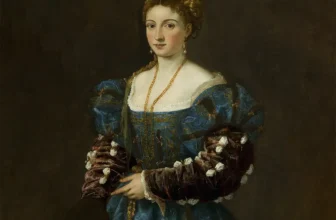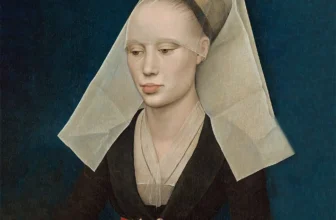Madonna of the Yarnwinder: A Guide to Leonardo da Vinci’s Enigmatic Masterpiece
Shopping Ads: Invest in Hidden Masterpiece: Rare Antique Oil Paintings For Sale. Limited Originals Available 💰😊 Are you looking for authentic hidden masterpiece? Explore old master antique oil paintings from the Renaissance and Baroque eras. From 16th-century portraits to 18th-century landscapes. Authenticity guaranteed, Old Master antique oil paintings for sale. Shop Now! 🎨 Renaissance And Baroque Art Old Master Portrait Paintings Landscape Antique PaintingsFew works in the history of Renaissance painting carry the quiet magnetism, symbolic density, and scholarly intrigue of Leonardo da Vinci’s Madonna of the Yarnwinder. Painted around 1501–1507, this enigmatic image of the Virgin Mary holding the infant Christ, who gazes, fascinated, at a cross-shaped yarnwinder, has been revered, debated, replicated, stolen, and rediscovered over centuries. For antique art collectors, the painting is not merely another item in Leonardo’s storied oeuvre. It is a gateway into his late style, his spiritual philosophy, and the complex relationship between workshop production, original authorship, and modern attribution science.
This article presents an in-depth exploration suitable for collectors: the painting’s history, meaning, symbolism, provenance controversies, scholarly debates, modern critical reception, current location, and estimated valuation. It is tailored to help seasoned and aspiring collectors understand why this particular image remains one of Leonardo’s most captivating and puzzling creations.
The Making of the Yarnwinder Madonna
The Madonna of the Yarnwinder was likely commissioned by Florimond Robertet, the French king’s secretary, around 1501, during Leonardo’s second Florentine period. This was a time when Leonardo was juggling numerous commitments: engineering projects, anatomical studies, architectural ideas, and unfinished paintings such as The Virgin and Child with St. Anne. The Madonna theme was already central in his artistic evolution, yet at this stage his representations of the Virgin became more psychologically intricate and more deeply intertwined with layers of theological symbolism.
Two major surviving versions of the Madonna of the Yarnwinder are known:
The Buccleuch Madonna (sometimes called the Lansdowne Madonna)
The Taddei Madonna (sometimes called the Napoleon Madonna)
Both versions are believed to involve Leonardo’s workshop, but substantial scholarly consensus holds that the Buccleuch version contains Leonardo’s own hand in key passages, particularly the modeling of the figures, the dynamic composition, and the subtle sfumato transitions. The Taddei version is considered of high quality but generally attributed more to his circle.
Leonardo’s original design survives in several preparatory drawings, including sheets in the Louvre and the Royal Collection at Windsor. These sketches prove that Leonardo conceived the fundamental idea: a young Christ reaching toward a yarnwinder, which doubles as a cruciform symbol, a prescient foreshadowing of his destiny.
What the Painting Portrays: A Visual and Spiritual Overview
At first glance, the painting appears deceptively simple. It shows the Virgin Mary seated outdoors, holding the Christ Child on her knee. The baby reaches eagerly toward a yarnwinder, a device used to wind yarn onto a spindle, forming an X-shaped cross. His infant fascination contrasts with Mary’s contemplative, almost sorrowful expression. The landscape behind them is atmospheric, expansive, and unmistakably Leonardesque, echoing the mysterious geography shown in the Mona Lisa and St. Anne.
But underneath this domestic scene lies a profound theological message. Leonardo transforms an everyday object into a potent symbol of Christ’s future sacrifice, linked to themes of incarnation, childhood innocence, and divine foreknowledge. The dynamic motion of the child reaching is also characteristic of Leonardo’s interest in capturing “the movements of the soul.”
For collectors, this interplay between the mundane and the profound is part of what makes the painting so alluring. It distills Leonardo’s genius in a single image: naturalism infused with metaphysical meaning.
Controversies Surrounding Attribution and Workshop Participation
One of the most persistent issues surrounding the Madonna of the Yarnwinder is the question of authorship. Leonardo’s workshop was active, skilled, and accustomed to producing replicas of his compositions, often under his supervision. The original commissioner, Robertet, reportedly received a version of the painting, but since multiple copies existed early, identifying the “true” Leonardo has been challenging.
The Buccleuch Version: Generally Accepted as the Prime Version
The Buccleuch Madonna, held by the Duke of Buccleuch for generations, is widely considered the closest to Leonardo’s original. Several technical analyses, including infrared reflectography, pigment analysis, and underdrawing studies, have revealed techniques consistent with Leonardo’s hand, especially in the modeling of the figures and the subtle blending of tones.
The Taddei Version: High Quality but Likely Workshop
The Taddei version exhibits exceptional finesse but lacks several signature Leonardo characteristics, particularly in the treatment of shadows and atmospheric perspective. It is often attributed to one of Leonardo’s most talented assistants, possibly Marco d’Oggiono or one of the Boltraffio brothers.
Other Copies and Variants
More than 40 known copies exist, some remarkably early, indicating how popular the composition became. For collectors, the existence of multiple workshop pieces complicates provenance research and valuation but also creates opportunities to acquire period copies at vastly different price points.
Symbolism and Meaning: Theological, Artistic, and Emotional Layers
Leonardo never painted without deliberate symbolic intent. The Madonna of the Yarnwinder is a masterclass in layered meaning.
The Yarnwinder as Cross
The central symbol is the X-shaped yarnwinder, which functions simultaneously as:
A common household tool
A visual stand-in for the Cross
A metaphor for Christ’s future Passion
A symbol of the intertwining of divine fate and human domesticity
Christ’s gesture toward the yarnwinder expresses not curiosity alone but spiritual awareness, suggesting that even in childhood he senses his role as Redeemer.
Mary’s Expression
Mary’s face is tinged with tenderness but overshadowed by an almost melancholic contemplation. Leonardo gives her a quiet emotional depth, conveying her awareness of Christ’s future suffering. This contrast, innocent child and foreknowing mother, is one of the painting’s most emotionally charged elements.
Landscape as Symbolic Setting
The background landscape, though naturalistic, symbolizes:
The vastness and mystery of divine creation
The journey motif, life, sacrifice, and redemption
The fusion of human and divine realms
Leonardo believed that landscapes should reflect the emotional and spiritual state of the figures. The vast, misty horizon thus mirrors the gravity of the painting’s theme.
Gesture and Movement
Leonardo’s study of anatomy and motion is evident in:
Christ’s twisting, reaching motion
Mary’s stabilizing grasp
The flowing drapery that conveys gentle movement
These subtle motions add vitality, emphasizing Christ’s humanity and Mary’s protective presence.
Reception Over Time: From Renaissance Admiration to Modern Academic Debate
The Madonna of the Yarnwinder was admired shortly after its creation. Early descriptions praised the naturalism, delicacy, and expressive force typical of Leonardo’s late work.
18th–19th Century Collecting Boom
During this period, Leonardo’s works surged in popularity among aristocratic collectors. The Buccleuch family acquired their version during this era, elevating its status and ensuring its preservation.
20th Century Scholarship
By the mid-20th century, art historians debated the painting’s authorship extensively. With the rise of scientific imaging, much of the modern consensus shifted toward affirming substantial Leonardo involvement in the Buccleuch version.
Modern Critical Reception
Today, the painting is praised for:
Its subtle emotional power
The complexity of its symbolism
Its role in understanding Leonardo’s late style
Its fusion of domestic genre imagery and high theology
Collectors and scholars alike view it as a quintessential example of Leonardo’s ability to elevate everyday scenes into profound spiritual meditations.
The Painting’s Dramatic Theft and Recovery
One of the most notorious chapters in the painting’s history occurred in 2003, when the Buccleuch Madonna was stolen from Drumlanrig Castle in Scotland. The thieves posed as tourists, overpowered security, and escaped with the painting.
For four years the artwork remained missing, circulating in the shadowy world of illicit art trade. It was eventually recovered in 2007 during a police sting operation. This event transformed the painting into a symbol not only of Renaissance genius but also of the ongoing challenges faced by collectors and institutions in protecting cultural heritage.
Current Location: Where the Painting Is Today
The Buccleuch version, considered the prime, currently resides in private ownership, belonging to the Duke of Buccleuch. It has been exhibited occasionally, most notably after its recovery, but it is not on permanent public display.
The Taddei version is held in the National Gallery of Scotland (now the Scottish National Gallery) and is periodically displayed, serving as the most accessible example for the public.
Numerous high-quality copies exist in museums worldwide, including:
The Louvre Museum
Museo Nacional del Prado
The Hermitage
Various British collections
Collectors interested in period copies will often encounter them in European auctions.
How Much Is the Painting Worth?
Valuing a painting attributed to Leonardo or his workshop is complex, especially considering the presence of multiple versions. However, market analysts and art historians generally agree on the following:
If the Buccleuch Version Were Sold
The Buccleuch Madonna, widely accepted as containing Leonardo’s hand, would almost certainly command a valuation comparable to or exceeding other Leonardo works.
Estimated valuation:
$150 million to $250 million USD or more, depending on market conditions, provenance clarity, and buyer competition.
Some experts speculate it could surpass Salvator Mundi in private bidding due to its stronger scholarly consensus and superior historical documentation.
Workshop Copies
High-quality workshop or contemporaneous copies typically sell at:
$2 million to $20 million USD, depending on condition, provenance, and degree of workshop involvement.
Later Copies (17th–19th Century)
These are common at auction and usually range from:
$20,000 to $200,000 USD, depending on quality.
For collectors, the market offers multiple entry points depending on budget, though owning a true workshop or primary version remains exceptionally rare.
What Makes the Painting So Collectible?
Collectors are drawn to the Madonna of the Yarnwinder because it represents:
Leonardo’s late spiritual and psychological style
A rare surviving Madonna composition associated with the master
The blending of theological symbolism with everyday domesticity
A composition that was influential enough to spawn numerous early copies
A dramatic and well-documented provenance, including its theft and recovery
Furthermore, the emotional resonance between mother and child gives the painting a timeless universal appeal, while the symbolic layering, typical of Leonardo, continues to intrigue scholars and collectors alike.
Why the Yarnwinder Still Matters to Collectors Today
The Madonna of the Yarnwinder is a microcosm of Leonardo da Vinci’s entire philosophy of painting: the marriage of naturalism and symbolism, science and spirituality, motion and stillness. It is a window into his understanding of human psychology and divine purpose.
For collectors, investing in a work related to this composition offers:
Connection to one of Leonardo’s rarest devotional images
A link to Renaissance collecting traditions
An opportunity to engage with a subject that bridges everyday life and transcendent meaning
A valuable asset with enduring scholarly interest and market demand
Whether one owns a direct workshop copy or simply studies the original, the painting remains a symbol of artistic innovation and spiritual depth.
Leonardo da Vinci’s Madonna of the Yarnwinder stands as one of the most compelling and enigmatic works of the Renaissance. Its intricate symbolism, emotional complexity, and disputed authorship make it a continual source of fascination for antique art collectors and scholars. From its beginnings in Leonardo’s Florentine workshop to its dramatic modern-day theft and recovery, the painting carries a narrative as layered as the imagery itself.
For collectors, it represents a rare intersection of aesthetic beauty, intellectual depth, and historical importance. Whether seen as a devotional image or a philosophical meditation on destiny and motherhood, the Madonna of the Yarnwinder remains a masterpiece whose meaning continues to unfold across centuries, just as Leonardo intended.




